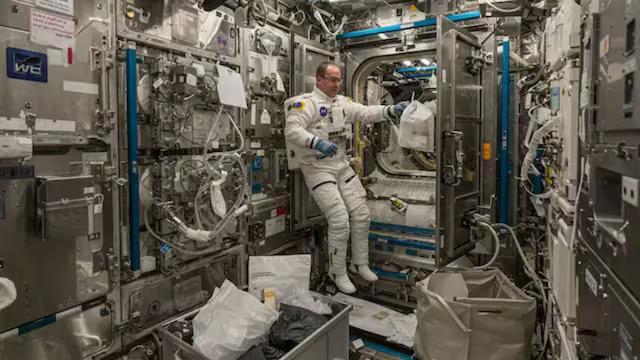
What Happens to Poop, Pee, and Puke at International Space Station?
The International Space Station (ISS) is a marvel of human innovation, a symbol of international cooperation, and a platform for groundbreaking scientific research. But have you ever wondered what happens to the waste products of the astronauts who call the ISS home for months at a time? From the moment they arrive on the station, astronauts generate a significant amount of waste, including poop, pee, and puke. So, what happens to these unwanted visitors in space?
The Water Recovery System
NASA has equipped the ISS with a Water Recovery System (WRS) that reclaims and purifies water from astronauts’ urine and sweat. This system is a critical component of the station’s life support system, as it helps to conserve water and reduce the amount of waste that needs to be disposed of. The WRS uses a combination of filters, UV light, and chemicals to purify the water, making it safe for drinking and other non-potable uses.
Human Waste Management
When it comes to human waste, the ISS has a more…unconventional approach. Astronauts do not use toilets as we do on Earth. Instead, they use specialized waste containers that are designed to store human feces in a sanitary and hygienic manner. The waste containers are made of a specialized material that prevents the growth of bacteria and other microorganisms, and they are equipped with a valve that allows the waste to be easily transferred to a disposal bag.
Once the waste is collected in the disposal bag, it is sealed and stored in a specialized compartment within the ISS. The waste is then disposed of during cargo ships that burn up during atmospheric re-entry. This process is designed to prevent any potential contamination of the ISS or the Earth’s atmosphere.
Puke and Space Sickness
But what about puke? Many astronauts experience space sickness, also known as space adaptation syndrome (SAS), which is characterized by symptoms such as dizziness, nausea, and vomiting. To manage this issue, astronauts are equipped with space sickness bags, which are designed to contain any vomit that may occur.
Like human feces, the space sickness bags are also disposed of aboard cargo ships that burn up during atmospheric re-entry. This process helps to prevent any potential contamination of the ISS or the Earth’s atmosphere.
The Challenges of Waste Management in Space
Managing waste in space is a complex and challenging task. In addition to the physical challenges of storing and disposing of waste in microgravity, there are also concerns about contamination and the potential for waste to escape into space. To address these challenges, the ISS has a number of specialized systems and procedures in place, including the WRS and the waste containers.
Conclusion
The management of poop, pee, and puke at the International Space Station is a critical component of the station’s life support system. By using specialized systems and procedures, astronauts are able to generate minimal waste and minimize the risk of contamination. As the ISS continues to operate and new space missions are planned, the need for effective waste management will only become more important.






